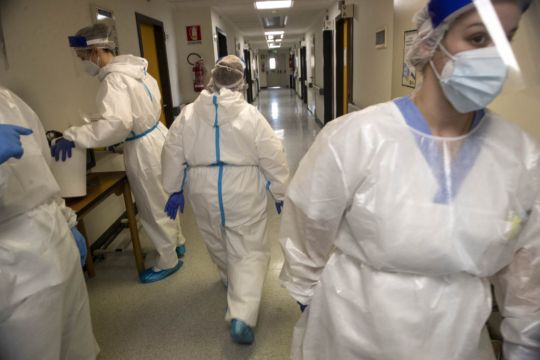This week marked one year since the announcement that all schools, universities and childcare facilities were to close in Ireland as Covid-19 became an increasing worry across Europe. Since then, 225,820 cases of the virus have been recorded in the State and 4,518 deaths.
The first case of the virus in the Republic was confirmed on February 29th, 2020, and by March 12th the Government made the first move in what would become the first national lockdown.
From Washington, then-taoiseach Leo Varadkar, who was in the US for St Patrick's Day, announced the closure of all schools and two weeks later the country was asked to stay at home.
Dublin, Louth and Clare were the first three counties to register cases of the virus, according to data from the Health Protection and Surveillance Centre (HPSC), and by March 20th each of the 26 counties in the Republic had confirmed at least one case, Monaghan being the last.
Dublin's large population contributed to the county's case numbers rising sharply in comparison to other areas, however outbreaks in workplaces and communities also led to sudden surges in other counties.
The country's efforts to 'flattened the curve' worked as hoped, as seen through the slowed increase in cases through May, June and July. However, when the stay at home guidance was lifted, along with the reopening of many sectors of society, case numbers started to drift upwards with greater pace once again.
The speed at which the second and third waves of the virus took hold is also evident in the data from the HPSC, as daily case numbers notably increased at the start of October.
The second national lockdown, beginning on October 21st, again slowed the spread of the virus, only for transmission to pick up once restrictions were eased at the start of December.

According to data from the European Centre for Disease Control and Prevention (ECDC), Ireland's surges have largely coincided with those of other European countries.
The pattern of the virus has been similar throughout the continent, as countries adopted the same easing and tightening of restrictions dictated by the incidence of the virus and its impact on healthcare services.
According to the latest weekly surveillance report by the ECDC, published on March 11th, Ireland is one of 10 countries in the EU/EEA where case numbers are stable or decreasing, along with Belgium, Denmark, Germany, Latvia, Lithuania, Luxembourg, Portugal, Slovakia and Slovenia.
The ECDC also noted test positivity rates have stabilised or decreased, along with mortality rates, however, high rates of hospitalisation and admittance to ICU were also highlighted in the report.







